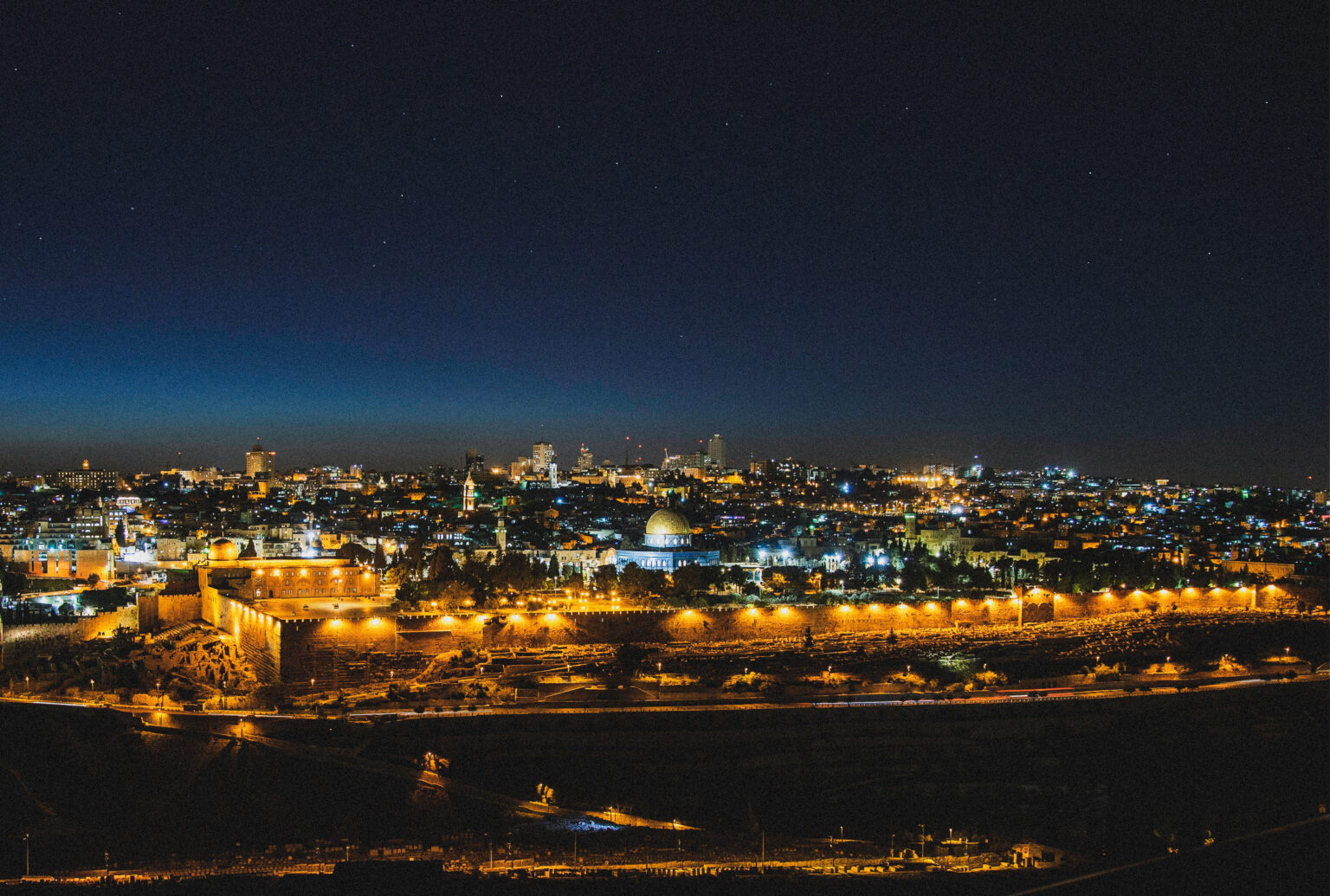Coveted since the most remote times, it was considered for millennia as the center of the world and is to this day a place of convulsion and tumult and coexistence between the ancient walls, vestiges and the sacred aura of the Wall, the Sepulcher and the Rock. The Holy City, sacred to the three abrahamic religions and the epicenter of some of the most significant events for the existence of humanity throughout a timeline that spans seven thousand years. this is the Jerusalem chronology.
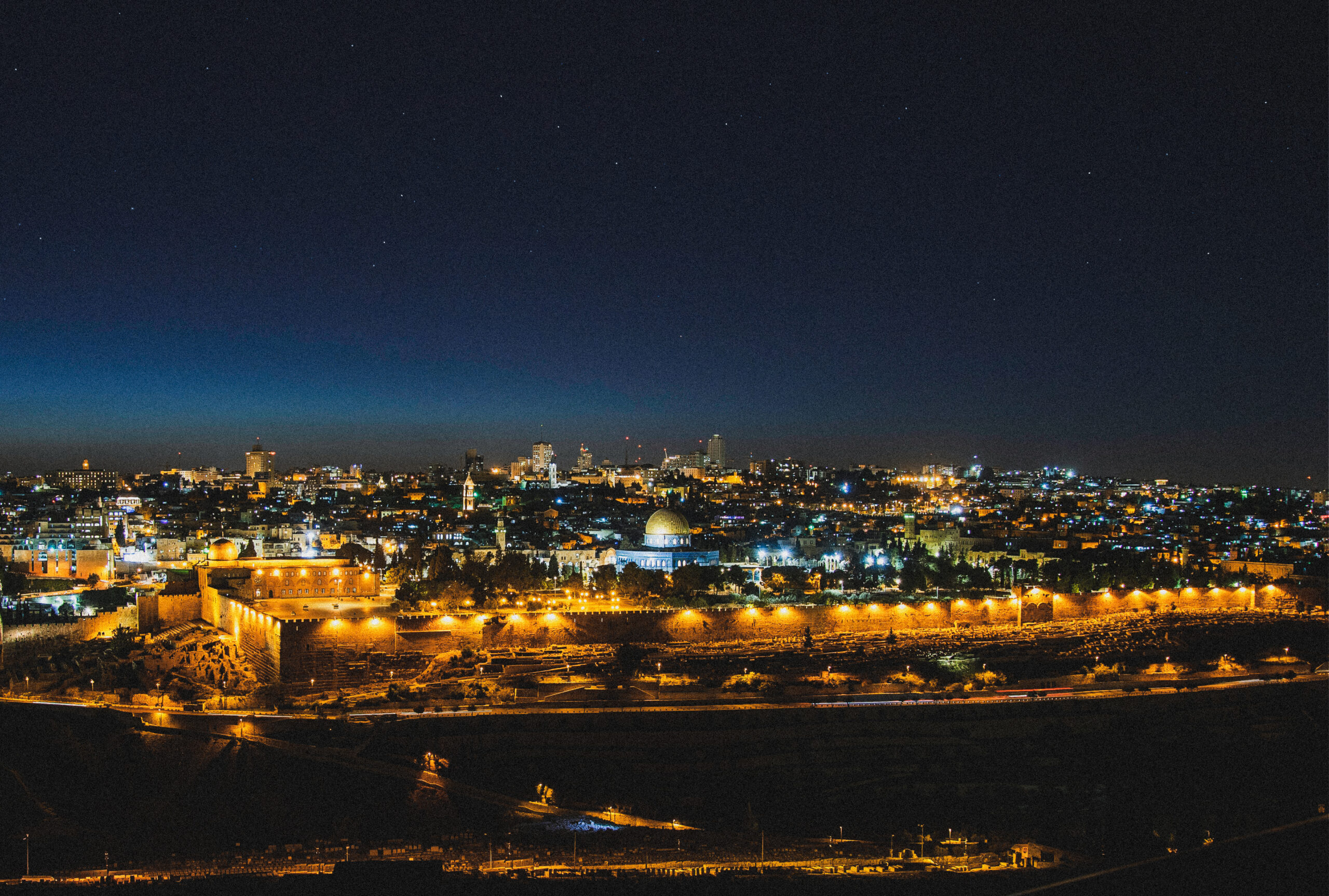
FOUNDATION
In prehistoric times, during the early Copper Age, human presence began in what is now Jerusalem. The germ of the Holy City began on Mount Ophel. Jerusalem in its present location was founded on those Ophel settlements by the Jebusites, a West Semitic people. It is around 1600 BC when according to the Scriptures, Abraham was going to sacrifice his son Isaac as proof of his faith and obedience to Yahweh and was stopped by an angel, who gave the patriarch a lamb to be sacrificed on the altar.. Jewish tradition establishes that the place where this founding myth occurred, Mount Moriah, is identified, along with Mount Zion, as the site where the Temple was built and which is known today as the Temple Mount. THE OLDEST MENTIONS. The oldest written sources where Jerusalem is mentioned belong to Ancient Egypt, where several mentions are made in what are known as Texts of Execration, writings related to the enemies of the Egyptian kingdom. It also appears in the Amarna Letters, an archive of official and diplomatic correspondence between ancient Egypt and its neighboring peoples and vassals. The oldest mention of Israel is found on the Merenptah Stele.
DAVID AND SOLOMON
In 1004 BC, King David conquered the Jebusites and therefore the city became the capital of the United Kingdom of Israel. Remains of the Davidic city are found on Mount Ohpel, where, as we mentioned, the city was founded. His son Solomon extended the city, built new fortifications and his main architectural work was the First Temple between 950 and 940 BC. The Temple was the most important sanctuary for Judaism where, after the wandering period of the tabernacles, the ‘Ark of the Covenant’ and the ‘Tables of the Law’ were protected, which according to tradition, Moses received on Mount Sinai.
SEPARATE KINGDOMS AND NEBUCHADENDEZZAR
When Solomon died, the kingdom was separated into two, with the Kingdom of Israel in the north and the Kingdom of Judah in the south, with Rehoboam, son and heir of Solomon as king and with Jerusalem as capital. The Kingdom of Judah was not very extensive territorially, no more than Jerusalem and its surroundings, but it became prosperous. Judah had great profits as the main supplier of olive oil to the Assyrian Empire and then the Babylonian Empire of which it gradually became a vassal to the point that the last kings of Judah were chosen from Babylon. 19 kings succeeded Rehoboam until Zedekiah tried to rebel against the Babylonian power by failing to pay their respective tributes and sought an alliance with Egypt to which Nebuchadnezzar II, king of Babylon, responded with absolute fury, conquering and destroying Jerusalem, including the Temple in 586, resulting in the Jewish exile in Babylon, which contrary to what tradition holds, was not of the Jewish people as a whole but of its elites. It is believed that it is within this exile that the writing of the Holy Scriptures begins.
THE END OF THE EXILE AND THE SECOND TEMPLE
In 539 BC. The Persian king Cyrus II “The Great” conquers Babylon and turns the Persian Achaemenid Empire into the main power in the area. Cyrus allowed the return of the Jewish communities deported to Judah; They returned to Jerusalem and rebuilt the city and the Temple. Construction of the Second Temple was completed in 516 BC. Around 445 a. C., the Achaemenid emperor Artaxerxes I issued a decree allowing the reconstruction of the city and its walls. Jerusalem regained its role as the capital of Judah and the cultural epicenter of the Jewish people.
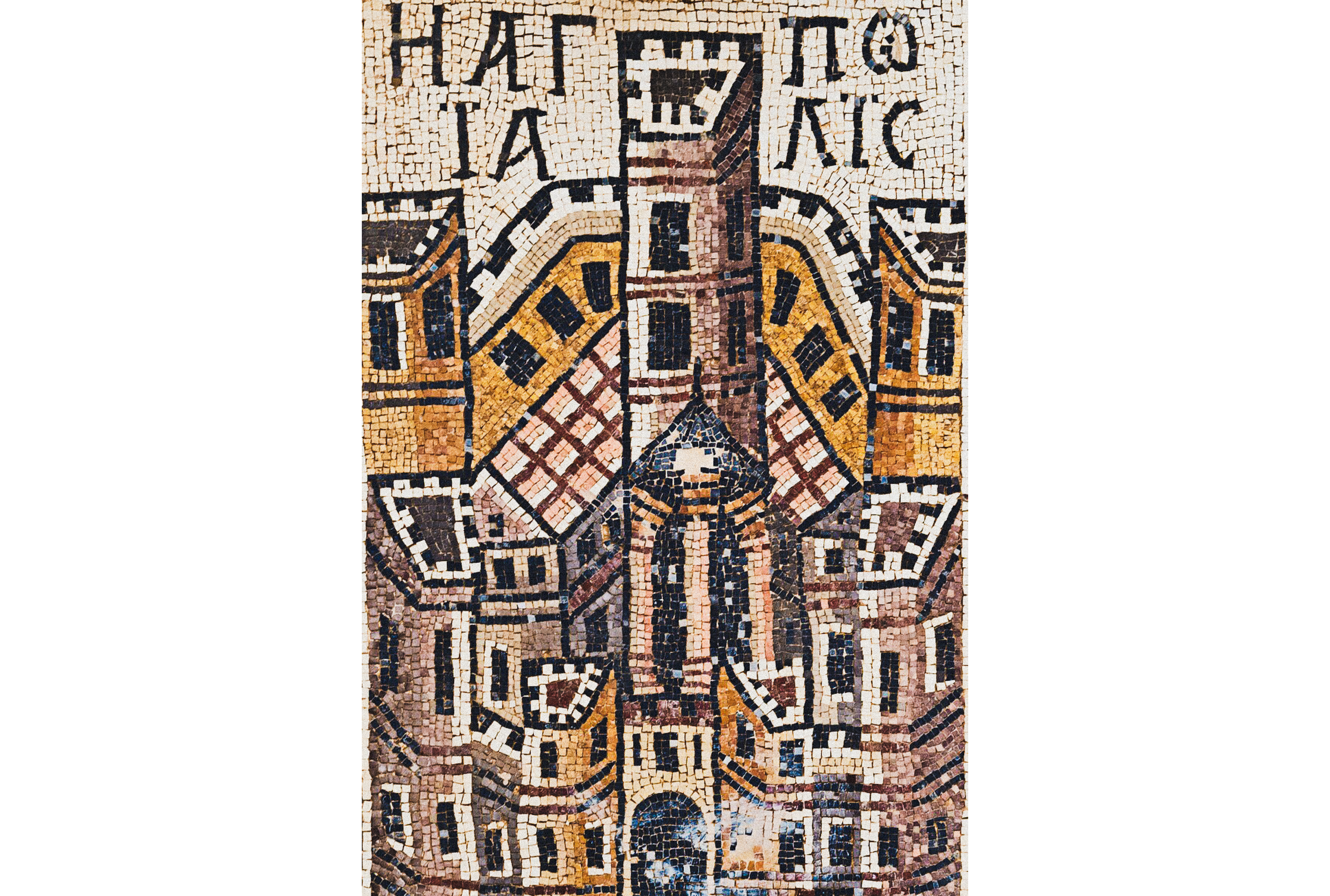
HELLENISTIC
At the end of the 4th century BC. Alexander II of Macedonia, ‘Alexander the Great’, conquered the Achaemenid Persian Empire and therefore became the new foreign power to subjugate the lands of Israel and Judah, but thanks to a skillful maneuver by the Levites, the Jewish priestly caste, who sweetened After Alexander heard about prophecies that spoke of the coming of a great king incarnated in him, Jerusalem did not suffer violence from its new conqueror. When Alexander died, his generals divided up the empire and the Levant came under the power of the Ptolemies who ruled from Egypt. The relationship between the Jews and the Ptolemies was good until in 138 BC the Seleucid Empire, another heir to Alexander’s Hellenistic Empire, took control of Canaan under the guidance of Antiochus III.
MACCABEES, HASMONEAN AND ROME
Unlike Alexander and the Ptolemies, the Seleucids did want to Hellenize the area by force, seeking to turn Jerusalem into a Hellenic city, the climax being in 167 BC, when Antiochus IV Epiphanes issued a decree prohibiting Jewish religious rituals. The Seleucids tried to build effigies of the Greek gods in the Temple of Jerusalem, sparking the rebellion of the Maccabees who defeated the forces of Antiochus. The revolt had such momentum that in 160 BC. Under the leadership of Judas Maccabeus and his brothers, the Jews fought for their political independence, which they achieved in 142 BC. Hasmonean dynasty ascended, with Jerusalem as its capital, keeping Israel independent for a century until 63 BC. As a consequence of the victory of Gnaeus Pompey the Great in the Mithridatic Wars and the Roman intervention in the civil war between the Hasmonean aspirants, Pompey conquered Jerusalem and the land of Israel for the Roman Republic, creating a puppet state where, after controlling all the centers of insurrection of pretenders to the Hasmonean throne, they named the Idumean Herod as King of Judea.
HEROD AND JESUS
Herod expanded and beautified the city with towers and palaces in a clear intention to Romanize the area and restored and extended the Temple. According to Christian tradition, it is under the reign of Herod that Jesus of Nazareth was born. When Herod died, Rome took direct control of the area, creating the province of Judea, and Herod’s heirs had to content themselves with being mere figureheads under the authority of a Roman procurator. Under that period, the true Jewish authority was the Sanhedrin of Jerusalem, led by the High Priest of the Temple and who had the greatest dealings with the Roman authority. Under the leadership of the High Priest Yosef bar Cayafá (Caiaphas) and the Roman Prosecutor Pontius Pilate, there was, during Pesach, the triumphal entry, capture in the Garden of Gethsemane, the trial and subsequent execution by crucifixion of Jesus of Nazareth in Golgotha, a hill outside Jerusalem. The followers of Jesus continued to preach his teachings, to the point of calling the first Christian council in the year 50, known as the Council of Jerusalem, where the separation of early Christianity from Judaism was consummated. The apostles and first Christians fled Jerusalem due to persecutions and spread their doctrine to all corners of the Roman Empire.
DIASPORA
In 66, the first Jewish-Roman war broke out, resulting in the siege and destruction of Jerusalem and the Temple by the Roman legions commanded by Titus. The only thing left standing from the second temple is what is known today as the Wailing Wall, one of the most sacred places in Judaism. The Emperor Hadrian drew up a plan for the reconstruction of Jerusalem under the Roman style, even changing its name to call it Aelia Capitolina, a situation that sparked another Jewish revolt, led by Simon Bar Kochba between the years 132 and 135. Rome crushed this. rebellion that resulted in the deportation of the Jews from their land, known as the diaspora, and Hadrian erasing the name of Judea and reorganizing the territory, naming it Syria-Palestine, in allusion to the Philistines, the ancient enemies of the Jews in the times of the Judges and the old kingdom. Jews were prohibited from entering Aelia-Capitolina under penalty of death with the exception of once a year, the Tisha-Ba’v, the national mourning for the destruction of the temples and other tragedies suffered by Jews in the future.
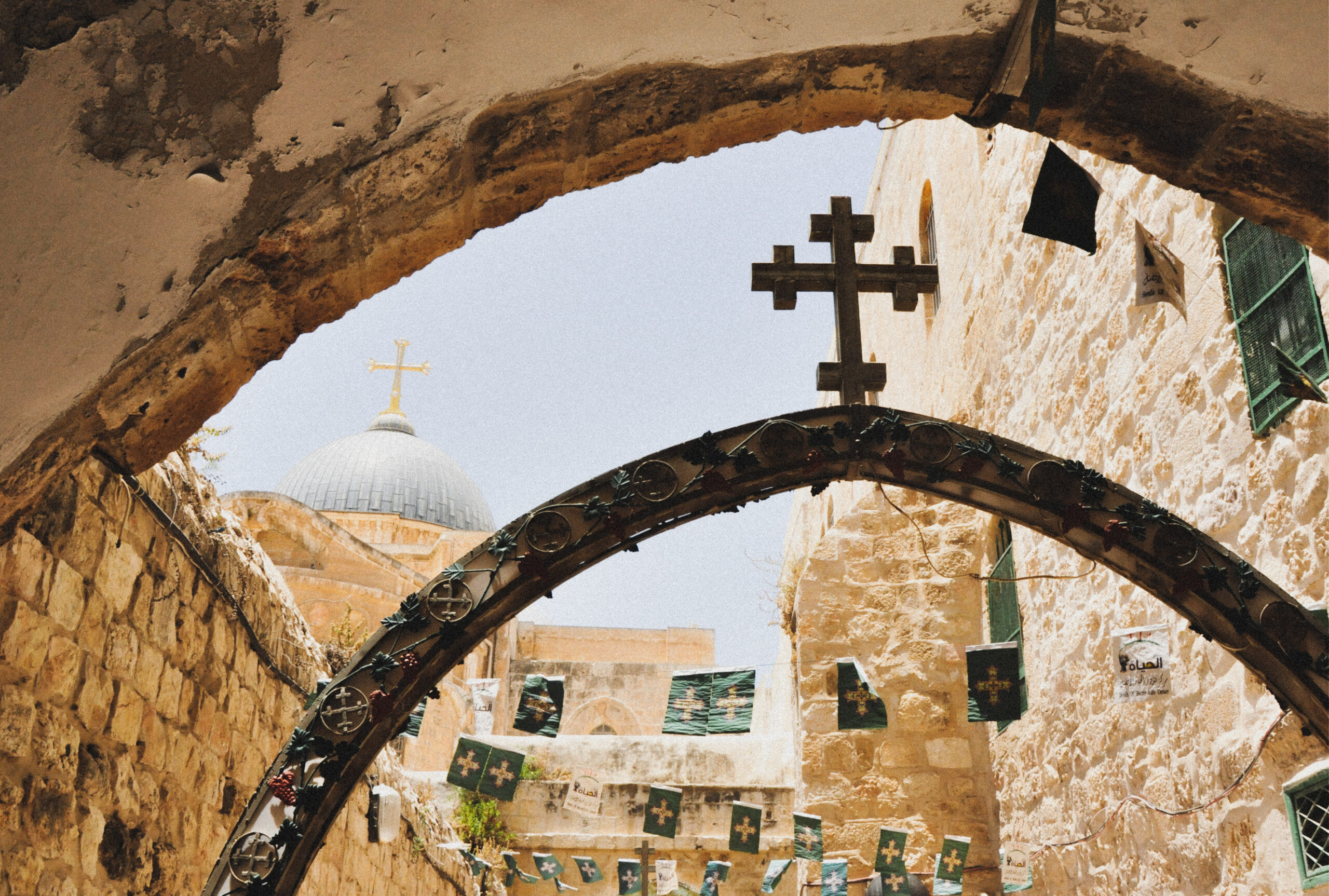
CHRISTIAN CITY
In 313, Constantine the Great issued the Edict of Milan, lifting the restriction against Christianity. Over time it would become the official religion of the Roman State. Beginning in the second decade of the 4th century, the first Christian temples and sacred sites began to be built in Jerusalem, such as the Church of the Holy Sepulchre. From this period until the fall of the Byzantine Empire, heir to Rome’s eastern dominions, Jerusalem was a practically Christian city. Already in the period of the early Middle Ages, Jerusalem was the seat of one of the most important Christian patriarchates along with Alexandria, Constantinople, Antioch and Rome. In the mid-4th century, the Roman emperor Julian, known to Christians as ‘The Apostasy,’ implemented a series of anti-Christian policies throughout the empire to reestablish paganism and remove Christianity from its role as state religion. In an effort to attack Christians doctrinally, he tried to rebuild the Temple of Jerusalem for the third time, but his work ultimately failed. It was the last attempt to rebuild the Temple.
SASSANIDS
In 614, the Sassanian Persian Empire took Syria, Palestine and other eastern territories from the Byzantine Empire, conquering Jerusalem after a 21-day siege that culminated in a great massacre of the population and the destruction of many temples. On the Sassanid side, there were many Jewish fighters motivated to recover the city and in exchange they were promised an autonomous Jerusalem. This conquest and Jewish recovery was short-lived, since Heraclius, the Byzantine emperor, recovered the territory and Jerusalem became Byzantine again, but not for long.
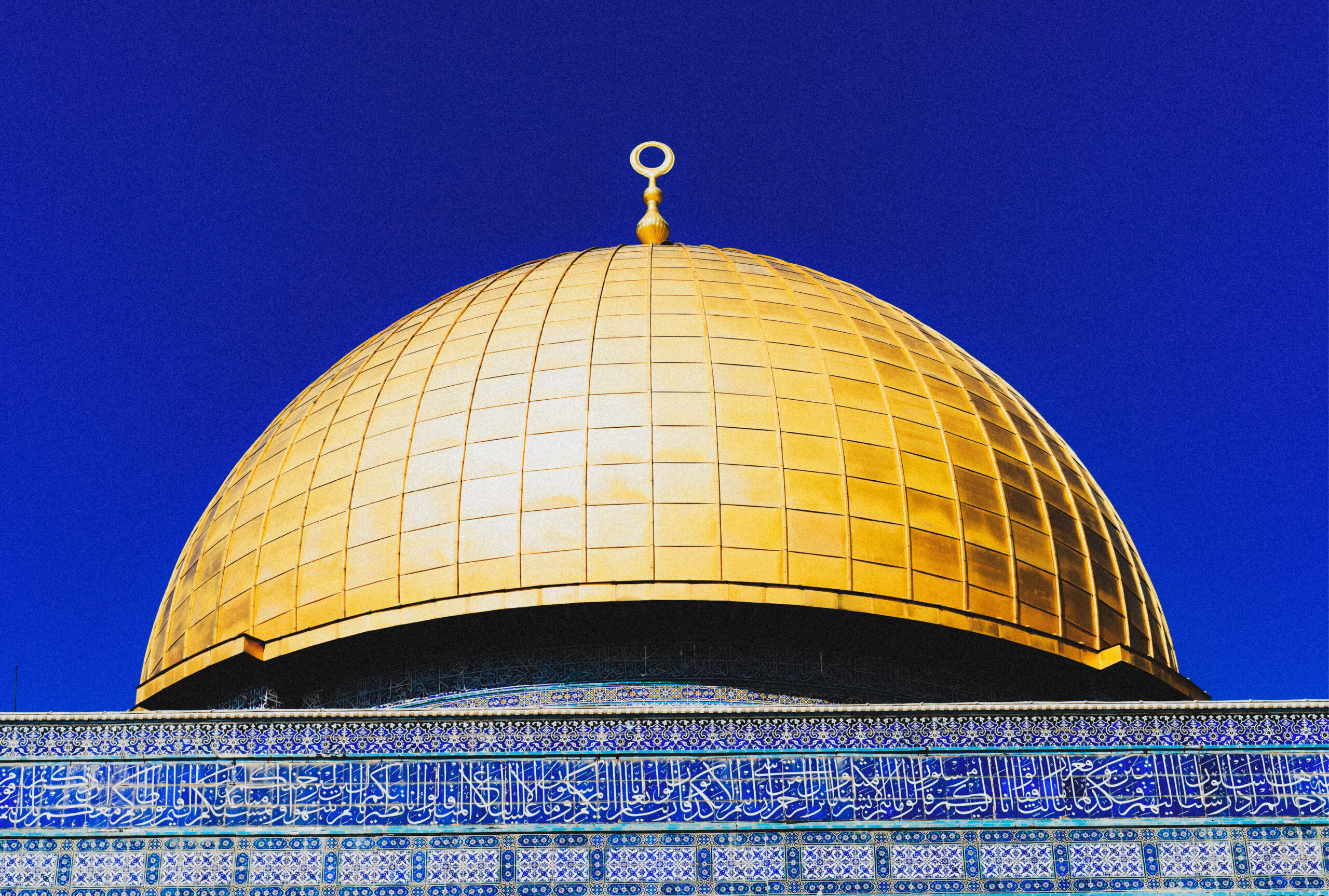
AL-QUDS
In 638 the Arabs led by Umar ibn Al Khattab conquered Jerusalem as well as all of Syria, Palestine, the Levant and Egypt, expelling what remained of Roman and Byzantine power in the area. These Arab conquerors already professed a new faith that venerated the same god as the Jews and Christians, established theologically and doctrinally by a prophet originally from Mecca who had died just 6 years before, Islam. Originally, Muslims prayed in the direction of Jerusalem, recognizing the sanctity of the Temple Mount, where according to Islamic tradition, the Prophet Muhammad ascended to the heavens from the same rock where God created the first man, Adam, where Abraham, known as Ibrahim in Arabic, was going to sacrifice his son, who in Islam, the son was not Isaac but his firstborn, Ishmael, patriarch of the Arab people and from where the divine presence was stronger and the Kodesh HaKodashim, Sanctasanctorum in Latin, the Holy of Holies in English, the most sacred site of the Temple. On that rock, at the end of the 7th century the Umayyad caliph Abs al Malik built one of the most sacred, symbolic and particularly beautiful places in Jerusalem and the World, The Dome of the Rock, and on the temple mount, what is known as known as the Esplanade of the Mosques, with the Al-Aqsa Mosque, the Dome of the Chain and 4 minarets, occupying for Islam the most sacred area for Judaism and where, according to its doctrine, it is the only place where the temple, which, well, obviously, would cause problems. Jerusalem would begin to be known in Arabic as Urshalim Al-Quds, “The Holy One.”
DEUS VULT
In the early 11th century, in 1073, Jerusalem was conquered by another Islamic power, but not Arab but Turkish, the Seljuks, who dominated an extensive empire that gave them brief dominion over the Levant for a couple of decades until the city. The saint was reconquered by the Arabs, this time from the Fatimid dynasty, although it was only a sigh because in 1099, the Christians of Western Europe led by Godfrey of Bouillon, Bohemond of Taranto and Raymond of Toulouse, harangued by the Pope’s Deus Vult slogan Urban II conquered Jerusalem after a bloody siege, initiating a fundamental historical period in the future of relations between the eastern and western Mediterranean, the Crusades. With the Christian triumph of the First Crusade in 1099, the Kingdom of Jerusalem was established as a typical secular kingdom of Western Europe. This kingdom lacked territorial and population depth and depended too much on the outside in matters of defense and economy. Saladin, Sultan of Syria and Egypt and founder of the Ayyubid caliphate who recovered Jerusalem for Islam in 1187 after a long siege and fierce Christian defense commanded by Balian of Ibelin. Saladin spared the lives of the 60,000 Frankish Christian inhabitants on the condition that they leave the Holy Land and after paying a ransom, and allowed the original Orthodox Christians to stay in the city. Under the sovereignty of Saladin and the Ayyubids, markets, houses and hostels were built for pilgrims but after the wear and tear suffered in the third crusade, Saladin and the king of England, Richard I Lionheart, the city once again allowed Christian pilgrimages. Jerusalem would not return to Christian control, with the exception of a brief period in which the Holy Roman Emperor Frederick II and Sultan Al-Kamil agreed to the peaceful surrender of the holy city in exchange for the Muslim holy places remaining under Ayyubid control. At this time, in 1204, the Sephardic rabbi, philosopher, doctor and astronomer originally from Al-Andalus, Moisés ben Maimón, better known as Maimonides, visited the Temple Mount and worked on its contributions, considered canonical, within the Judaism. Maimonides was not the first European Jew to arrive in the ancestral capital of his people and faith in that period, since between 1210 and 1258, 300 English and French rabbis were the first to leave in an organized manner to Jerusalem and begin to work on the idea of make the Jews return to their ancestral home. Frederick II could not maintain control of the city for long and in 1244, Jerusalem was sacked and conquered by the Khezmite Tatars, fierce Muslim horsemen originally from Persia who in turn were expelled by the Ayyubids a few years later, in a series of conflicts and struggles that greatly decimated the population of Jerusalem. In 1260, Jerusalem was conquered by the Mamluks, Muslim warriors of Caucasian, Slavic and Altaic origin who went from slave warriors to forming a dynasty, but when they conquered Jerusalem they had to face on the one hand the Crusader attacks and on the other the Mongol hordes. , earthquakes and the plague. When in 1267, another Hispanic Jew, Mose ben Nahman, traveled from his native Aragon to Jerusalem, he found only a city in ruins, with only 2000 inhabitants among which there were only 2 Jewish families, 300 Christians and the rest Muslims. The Mamluk period, which lasted from 1260 to 1517, marked one of the most difficult and dark times for the holy city.
OTTOMAN RULE AND ALIYAH
In 1517, a new superpower took control of Jerusalem, the Ottoman Empire that 70 years earlier had conquered Constantinople. Many of the Jews expelled from Spain in 1492 settled in the territory of the Ottoman Empire and many did so in Palestine and Jerusalem. The Ottoman Empire was, since the Roman Empire, the most stable power that took control of Palestine and therefore of Jerusalem and the city underwent a profound renewal, modernization, stability, prosperity and peace initiated by Sultan Suleiman the Magnificent. builder of the walls that we can see today. In 18th century, the Aliyah began – waves of migration back to the land of Israel – of Orthodox Hasidic Jews originating from Central, Eastern Europe and the Baltic, creating population centers that little by little made the Jewish demographic grow in area. In the mid-19th century, Jerusalem’s demographic explosion was such that the city began to expand beyond its walls. In 1864, the British consul documents that the population of Jerusalem is 15,000 inhabitants, of which 50% are Jewish, 30% Muslim and 17% Christian, supporting previous studies by Prussian and American diplomats that confirm that the Jewish population of Jerusalem is the majority. In 1872, there was another great wave of Jewish migration, the Yemenite Aliyah, where thousands of Jews from Yemen settled in Jerusalem, further increasing the Jewish population. In the mid-19th century, the Ottomans built the first paved road that connected Jerusalem with the port of Jaffa while the railway arrived in 1892, which greatly facilitated and encouraged pilgrimages to the holy city.
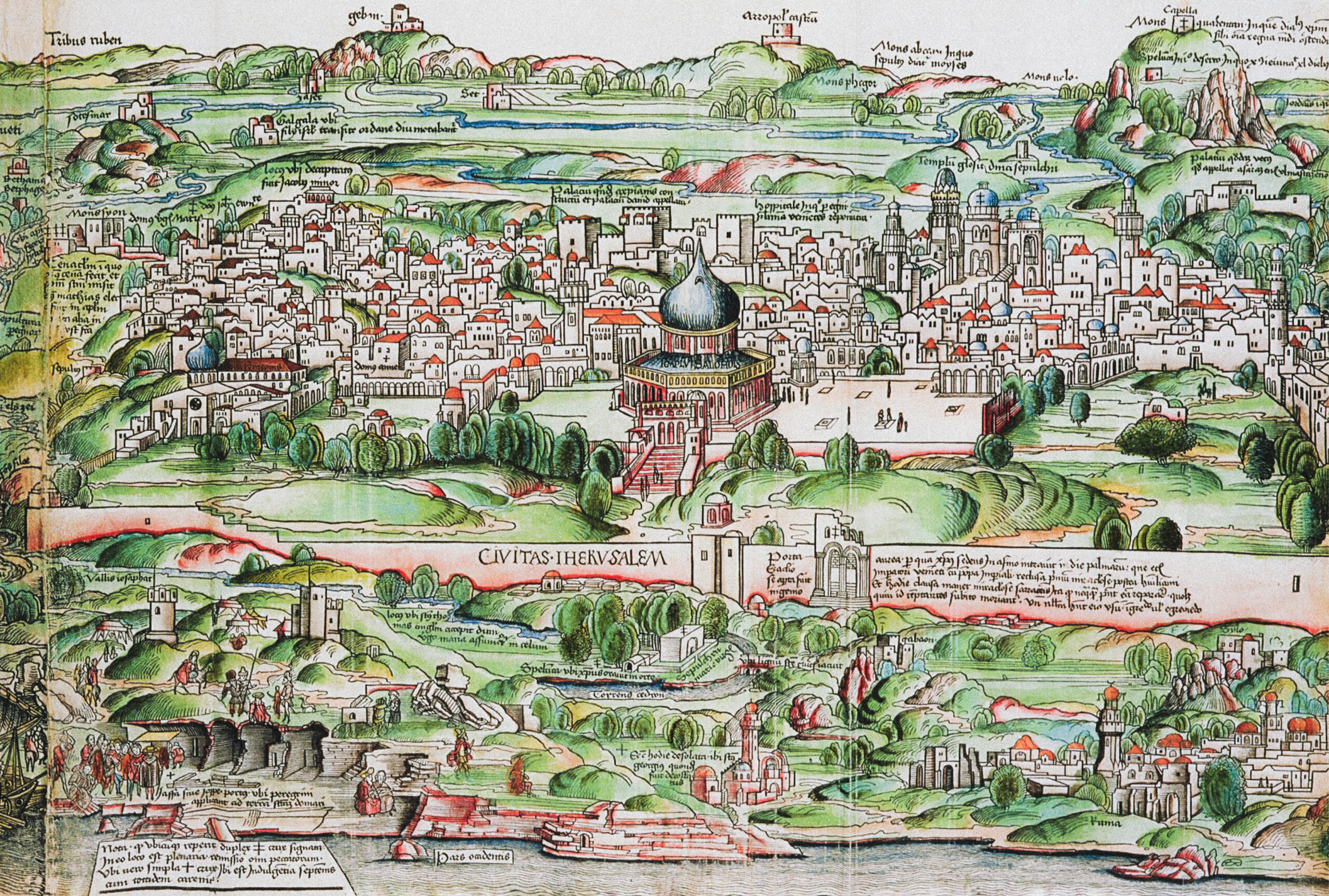
THE (HARMFUL) BRITISH MANDATE
At the beginning of the 20th century, in the First World War, the British army took the city after a fierce battle against the Ottoman troops, thus culminating the Palestine and Sinai campaign. With the fall and dissolution of the Ottoman Empire as a result of the First World War, the League of Nations handed over the territories of Iraq, Transjordan and Palestine to the United Kingdom, thus creating the British Mandate of Palestine in 1917. The inability and negligence of the British goverment to exercise social control and the cunning ignorance of agreements made with both the Jews and the Arabs, made the pressures reach an extreme point that in 1929, there was a great massacre of Jews in Jerusalem and Hebron resulting in the birth of Jewish paramilitary self-defense groups that had tensions with the occupying British troops. Between 1922 and 1948, waves of Jewish migration to the Holy Land caused the Jewish population to rise from approximately 50,000 to around 165,000, and at that time, there was relative peace and collaboration between the British and Palestinian Jews in the fight against Nazi Germany. On July 22, 1946, tensions between the British and Jewish nationalist groups came to a head when Irgun, a terrorist and Jewish nationalist paramilitary organization, attacked the south wing of the King David Hotel where the authorities’ base was located. British. The attack was in retaliation for the restrictions that the United Kingdom imposed on the immigration of Jews to Palestine and the persecution that Royal Navy ships carried out against ships carrying Jewish migrants. The nascent United Nations Organization determined in its general assembly on November 29, 1947, the partition of the territory for the creation of an Arab state and a Jewish state, establishing Jerusalem and its surrounding towns as a CORPUS SEPARATUM under an international regime. responsibility of the UN, a condition that the Jews accepted but was rejected by the Palestinian Arabs and neighboring Arab countries, beginning the armed struggle. Beginning in January 1948, the Jewish population of Jerusalem, approximately 100,000 inhabitants, was under siege by Arab troops and it was in the midst of this conflict that the British authorities fled the country on May 15, 1948, a time in which that the period of the Mandate was fulfilled. British Mandate of Palestine is one of the darkest periods in the history of Jerusalem and the Holy Land and is the seed of many of the serious problems that exist today.
THE STATE OF ISRAEL AND THE ARAB WORLD. A RELATIONSHIP OF CHAOS
On May 14, 1948, one day before the departure of the British authorities and troops, David Ben Gurion read the Declaration of Independence of the State of Israel in the Tel Aviv Museum. The immediate response of its Arab neighbors: Egypt, Syria, Transjordan, Lebanon, Saudi Arabia, Yemen and various paramilitary groups, was the total war known as the Arab-Israeli War of 1948. The troops of the nascent State of Israel ignored the Corpus Separatum status of Jerusalem given by the UN and occupied West Jerusalem as well as much of the territory assigned by the UN for the Arab state, while the forces of the Kingdom of Jordan occupied the so-called ‘Old City’ of Jerusalem and the part known as the West Bank, which was also destined for the Arab state. In November of that bloody 1948, Israel and Jordan signed an armistice in 1949, demarcating their limits to the extent that their respective military advance had allowed. At the United Nations General Assembly on December 9, 1949, Jerusalem’s status as Corpus Separatum was reaffirmed. The State of Israel claims Jerusalem as its capital since the declaration of its independence and Jordan officially annexed East Jerusalem in 1950 and declared it in 1953 as its second capital along with Amman. In 1967, after a rise in tensions between Israel and Jordan, Iraq and the United Arab Republic, as the union between Egypt and Syria was known at that time, the 6-Day War broke out, with Israeli troops making a preemptive and devastating attack that resulted in the Israeli occupation of the Gaza Strip, Sinai, the Golan Heights, the West Bank and East Jerusalem, reunifying the city under the same authority. With this forceful and effective military campaign, Israel seemed to have taken the blow of authority at the international table, gaining territorial depth, controlling strategic and tactically advantageous points on the borders and consolidating Jerusalem as its capital. In the end, it was very difficult for the Israeli authorities to control the new conquests and despite the offer of peace and the fact that religious freedom is guaranteed by the state of Israel and that the Arabic language is considered official, it was impossible to annex the territories. Successive victories in a series of subsequent wars such as the Yom Kippur War of 1973 confirmed its independence and power. However, Israel has signed peace treaties with Egypt and Jordan, and efforts have been made to reach a permanent agreement with the Palestinian National Authority that claims East Jerusalem as its capital. In December 2017, United States President Donald Trump was the first head of state to formally recognize Jerusalem as the capital of Israel, defined as the “eternal and indivisible capital.” In our days, the Official Status of the holy city continues to be Corpus Separatum, disputed by two states that define its claims as legitimate but being an essential part of the faith of 4,314 billion people divided between the cross, the crescent and the star of David.
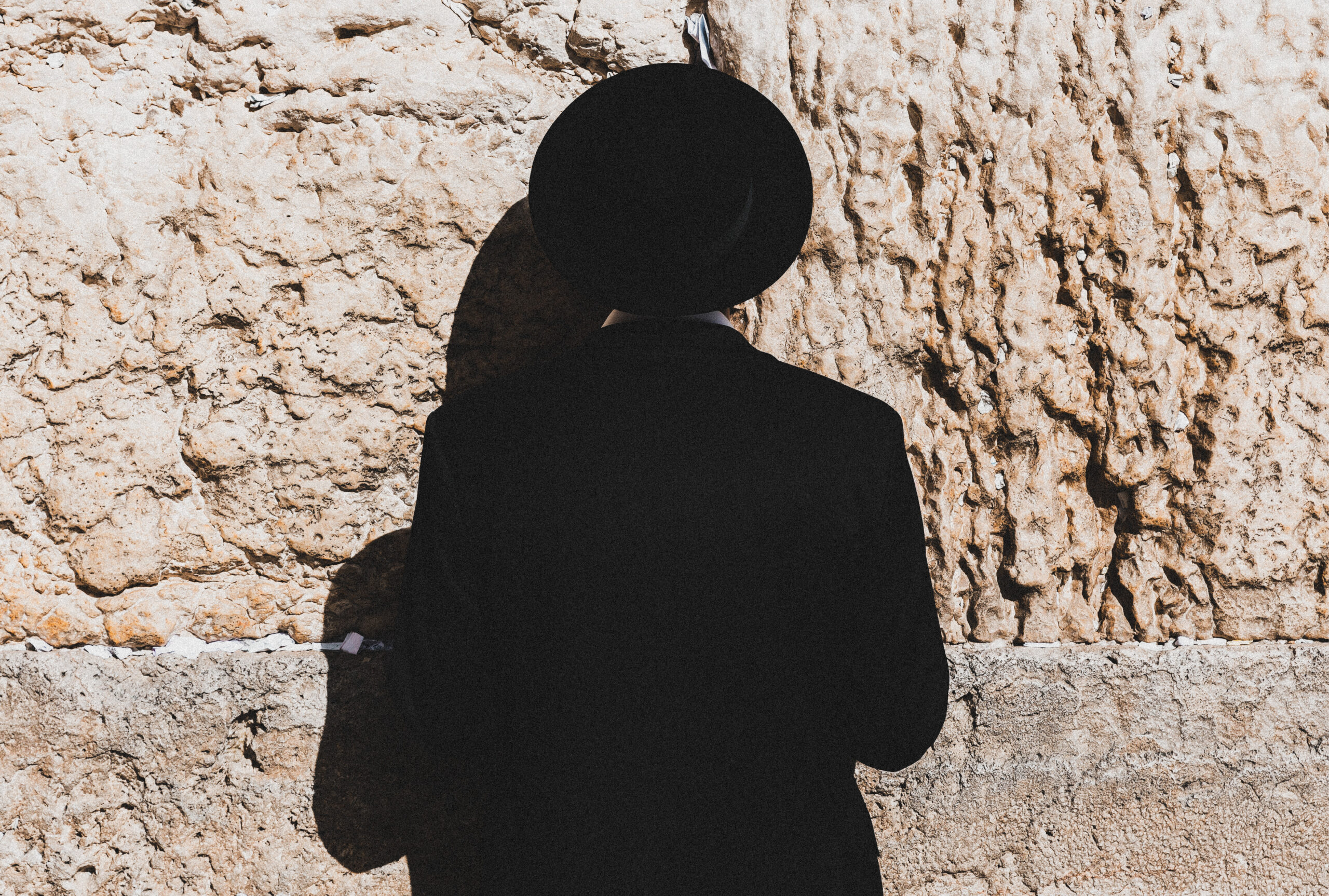
For some, that is the root of their problems, but the reality is that if it were not for the Sephulcre, the Wall and the Rock, perhaps Jerusalem would be non-existent or inconsequential.



